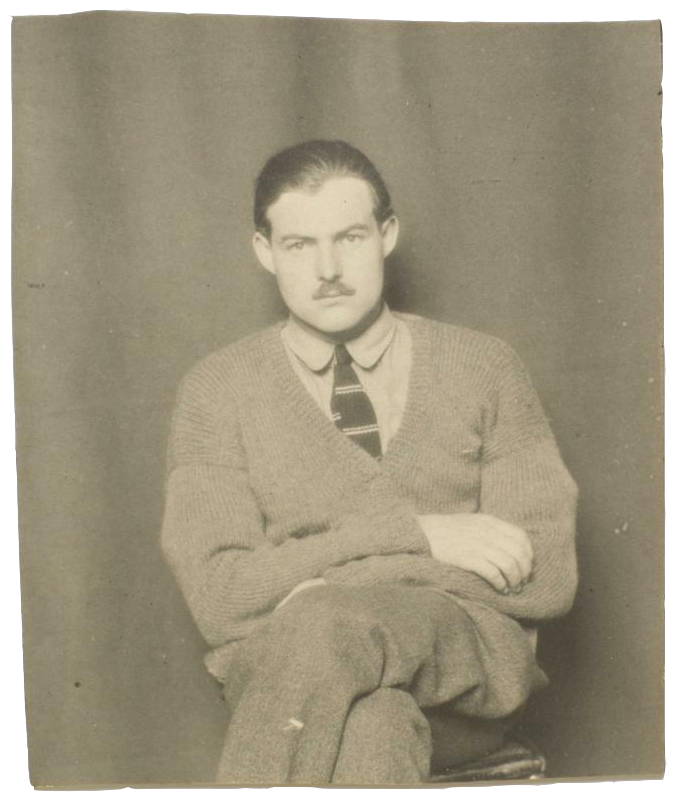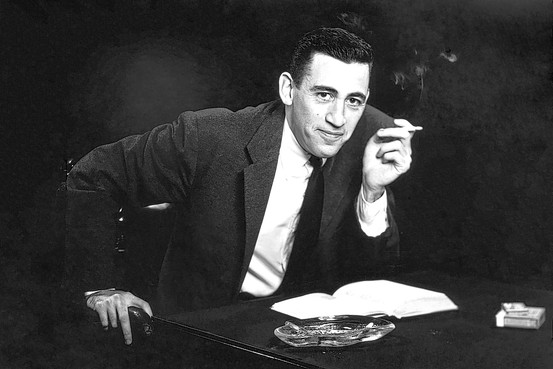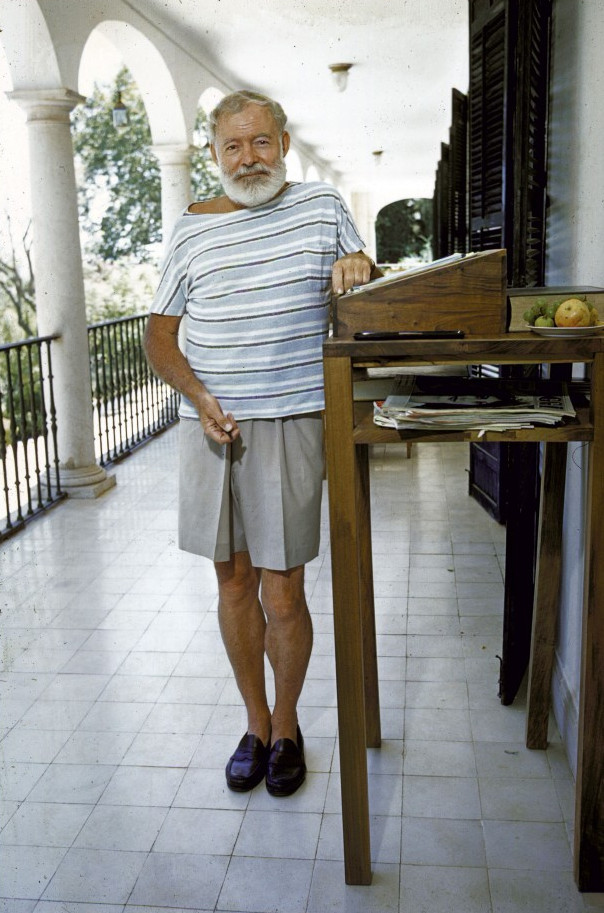
Photo by Man Ray. (Centre Pompidou.)
Official website of the author

Photo by Man Ray. (Centre Pompidou.)

J.D. Salinger, 1952. (via WSJ)
From Frederick Brown’s definitive biography of Flaubert, a typical day during the writing of Madame Bovary in 1851-56. Flaubert was 30-35 at the time.
Flaubert, a man of nocturnal habits, usually awoke at 10 a.m. and announced the event with his bell cord. Only then did people dare speak above a whisper. His valet, Narcisse, straightaway brought him water, filled his pipe, drew the curtains, and delivered the morning mail. Conversation with Mother, which took place in clouds of tobacco smoke particularly noxious to the migraine sufferer, preceded a very hot bath and a long, careful toilette involving the regular application of a tonic reputed to arrest hair loss. At 11 a.m. he entered the dining room, where Mme. Flaubert; Liline [Flaubert’s niece]; her English governess Isabel Hutton; and very often Uncle Parain would have gathered. Unable to work well on a full stomach, he ate lightly, or what passed for such in the Flaubert household, meaning that his first meal consisted of eggs, vegetables, cheese or fruit, and a cup of cold chocolate.… In June 1852, Flaubert [wrote in a letter] that he worked from 1 p.m. to 1 a.m. A year later, when he assumed partial responsibility for Liline’s education and gave her an hour or more of his time each day, he may not have put pen to paper at his large round writing table until two o’clock or later.
Life magazine has posted a trove of photographs of Vladimir Nabokov in 1959, a year after the first U.S. publication of Lolita. From the photo captions:
Nabokov wrote most of his novels on 3″ x 5″ notecards, keeping blank cards under his pillow for whenever inspiration struck. Seen here: a draft of Lolita.… Near the end of writing Lolita, Nabokov became dissatisfied with the work and tried to burn his notecards. Vera [his wife] stopped him.
This thing between me and my writing is the strongest bond I have ever had — stronger than any bond or any engagement with any human being or with any other work I’ve ever done.
Economist David Galenson posits that there are two types of writers: experimenters, a group that includes Dickens, Twain, and Virginia Woolf; and visionaries, such as Melville, Fitzgerald, and Hemingway.
Experimental innovators are seekers. Their most basic characteristic is persistent uncertainty about their methods and goals: they are typically dissatisfied with their current work, but have only vague ideas about how to improve it. Their dissatisfaction impels them to experiment, and their uncertainty means that they change their work by trial and error, moving tentatively toward their imperfectly perceived objectives. No matter how great their progress, their uncertainty rarely allows them to consider any of their works a complete success.
In contrast, conceptual innovators are finders. Their basic characteristic is certainty about some aspect of their work — their method, their goals, or both. Their certainty often allows them to work methodically, according to some system, toward their goals. Their clarity of intent and confidence in their ability often allow them to feel that they have fully realized their objectives in a particular work.
…
The life cycles of experimental and conceptual writers tend to differ sharply. Experimental writers’ achievements usually depend on gradual improvements in their understanding of their subjects and in their mastery of their craft. Their major contributions consequently emerge only after many years of writing, often late in their careers. Conceptual innovations, which depend on the formulation of new ideas, are made more quickly, and … typically occur early in a writer’s career.
— David W. Galenson, “A Portrait of the Artist as a Young or Old Innovator: Measuring the Carers of Modern Novelists” (2004) (link, fee required).
Galenson’s research is fascinating and feels dead-on to me. I am very much an “experimental” writer. No lightning bolts, no visionary insights, no “Eureka!” Only gradual, uncertain, incremental iterations of idea after idea, draft after draft. I plane my sentences over and over, like a carpenter, yet they never feel finished. No book ever feels completed, only abandoned. And always flawed.
The good news? Experimental writers tend to reach their peak later and hold it longer. That feels right to me, also. I am convinced my peak is still ahead of me and that ten years hence I will be writing much better books than I am now. But then, that attitude is probably the mark of an “experimentalist” personality too — the actual, completed books feel hopelessly botched, but the faith always remains that someday, by rigorous trial and error, I will chisel out a “perfect” book. So it goes.
(For a fuller explanation of Galenson’s theory, Malcolm Gladwell repackaged Galenson’s research for an interesting New Yorker article a couple of years ago.)

“Ernest Hemingway at his standing writing desk on the balcony of Bill Davis’s home near Malaga where he wrote The Dangerous Summer.” — Life Magazine, Jan. 1, 1960
I’ve wanted a standing desk like this for a long time. (Philip Roth uses one, too.)